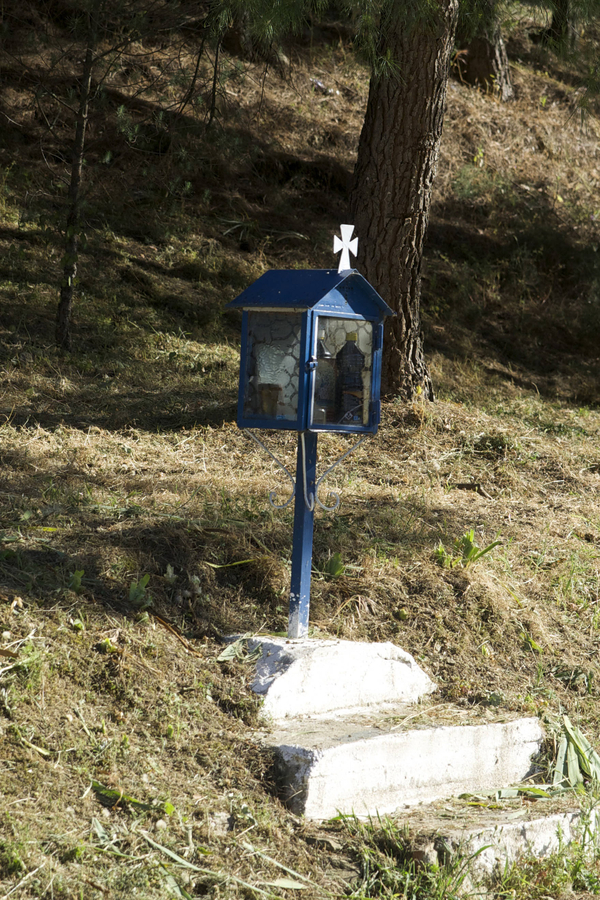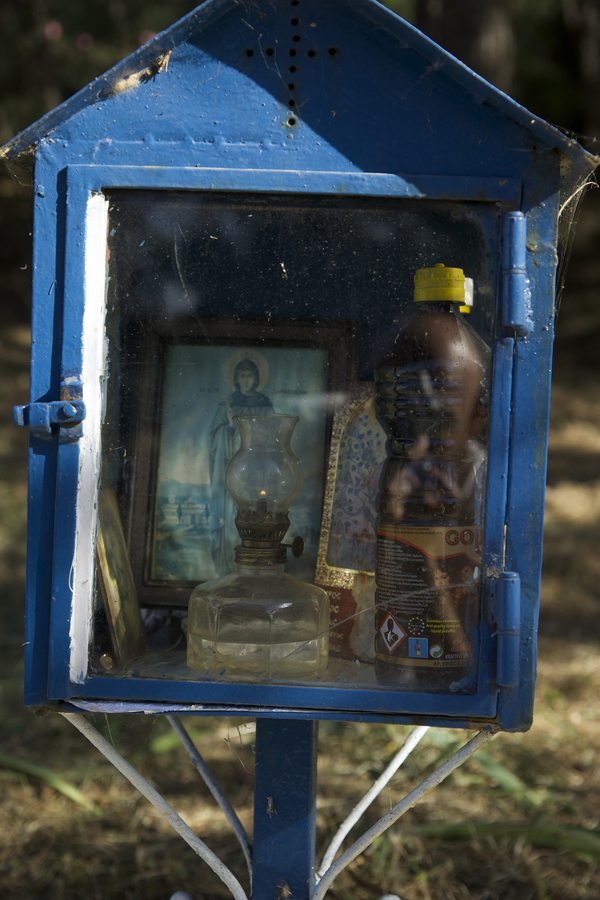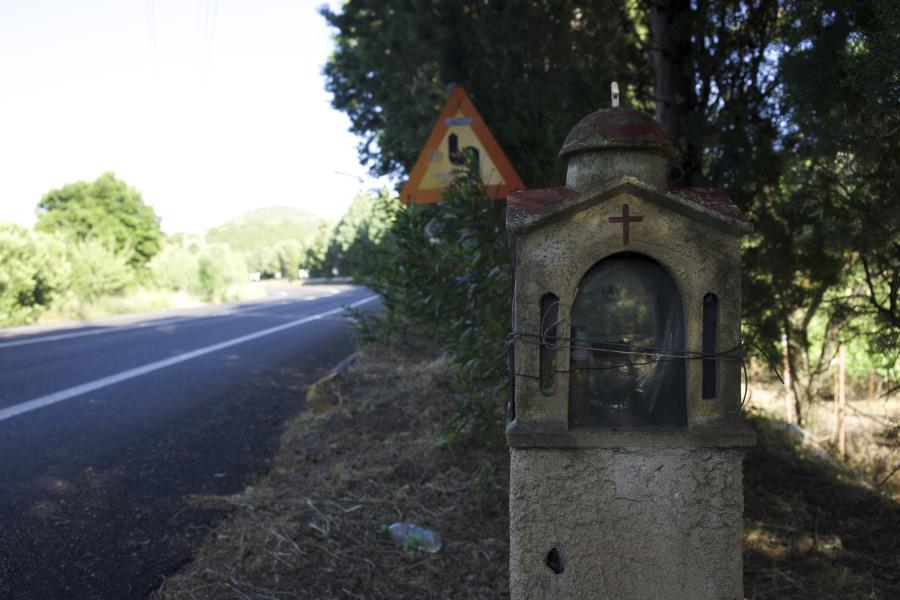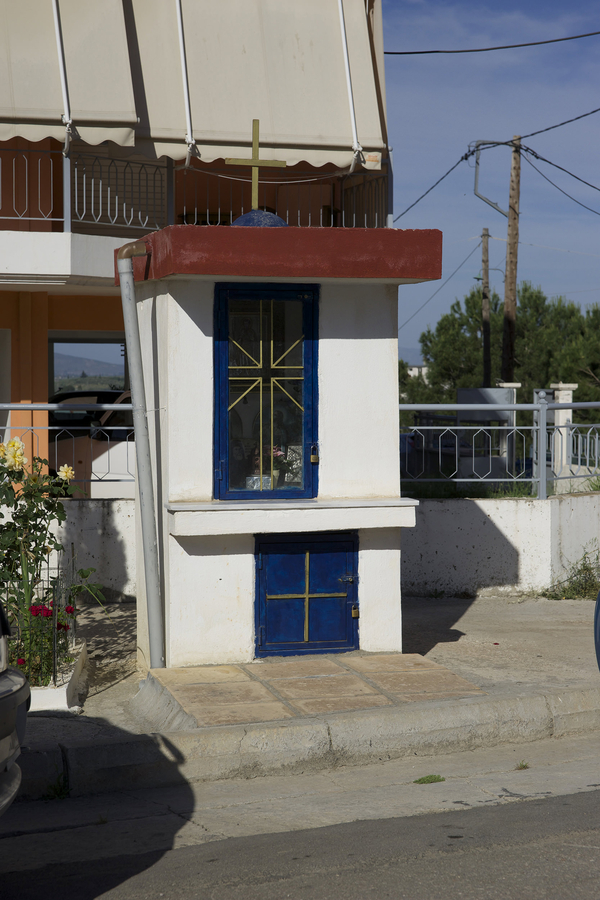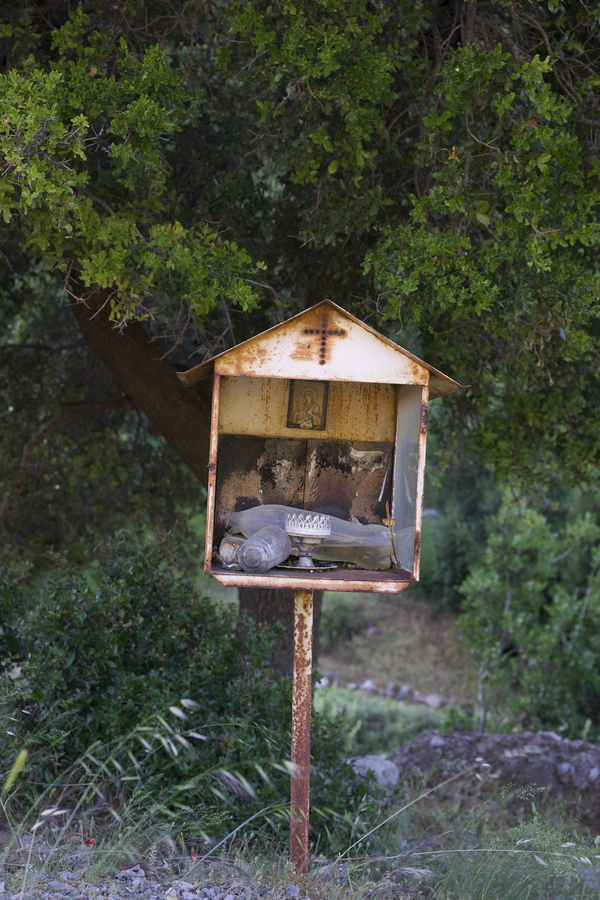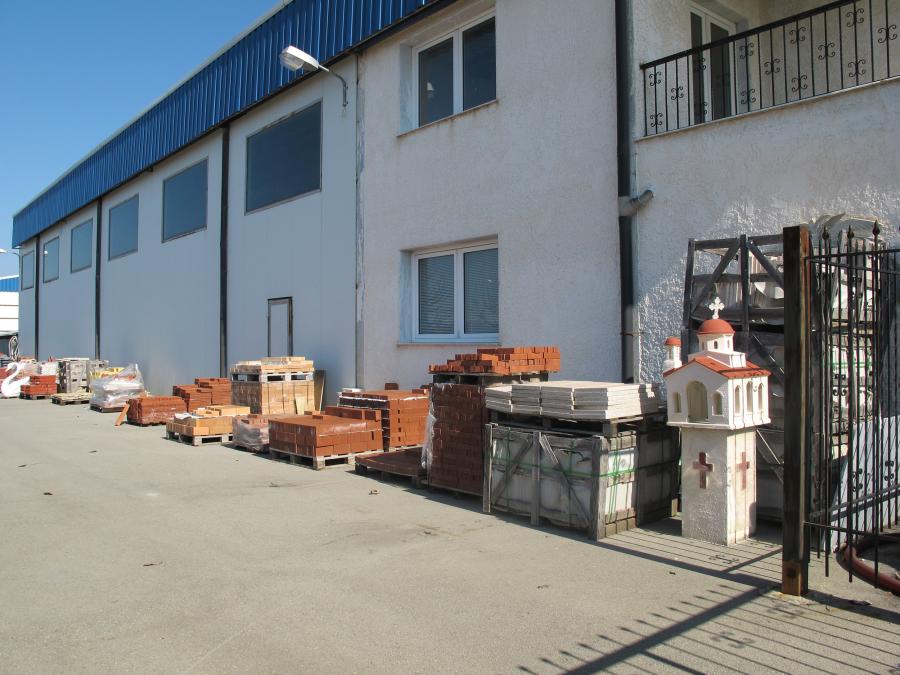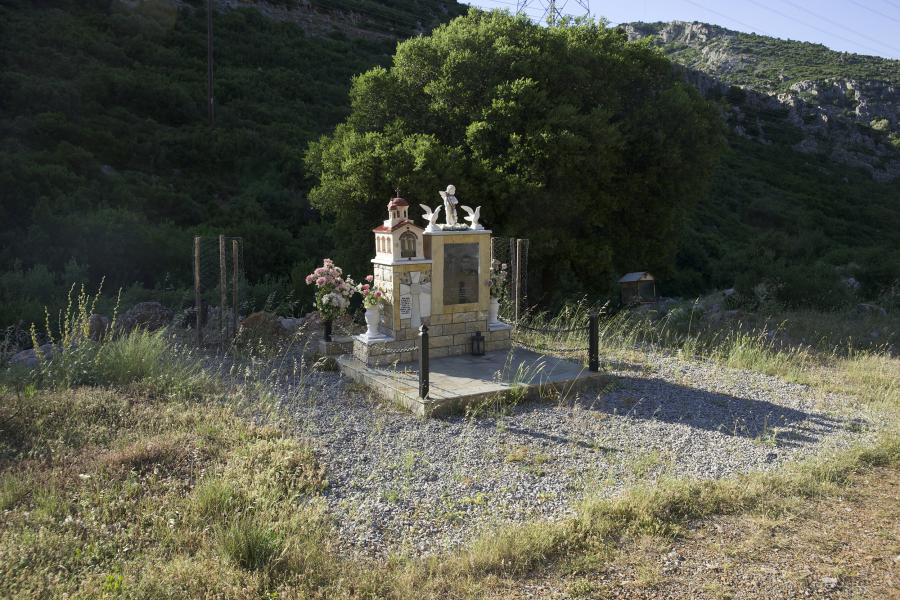Eikonostasia (Greek: εικονοστάσια, singular: eikonostasi, literally: “icon stand”) are a constant if understated part of Greek urban and rural landscape. They are vertical structures, approximately 1 meter high, made most often of metal (Fig. 1), with some made of stone or concrete (Fig. 4). They are usually painted in a single color (blue, red, yellow), but can be polychrome. They are equipped at the top with a square receptacle that can be as simple as a box and as intricate as a domed miniature church (Fig. 3). This receptacle may contain one or more icons, along with various paraphernalia, including a candle, a bottle of olive oil, an incense burner, and incense (Fig. 2). Because the receptacles do not lock, all items are inexpensive: the icons are paper prints pasted on wood planks, the oil is in plastic, reused containers, the incense burners are usually the cheapest ones a person can find in stores that sell religious merchandise. Despite the modest materials of both the structures themselves and their contents, the eikonostasia retain a humble and endearing charm.
Most often eikonostasia mark the sites of automobile accidents. In such cases, they are erected either as a thanksgiving, if the people involved survived, or as a memorial to those who died. An unintended consequence of this function is that eikonostasia alert drivers to perilous turns, uneven pavements, and hazardous intersections. Anecdotal evidence in Greece suggests that they are in fact more reliable indicators of dangerous road conditions than official, government signage (Fig. 3).
In the urban environment eikonostasia are most often ad hoc shrines to a particular saint or saints, dedicated by a family, or even a whole neighborhood (Fig. 4). They serve as a focus of piety and have an evident apotropaic and protective function. In contrast to those in provincial highways that, once erected and equipped, are gradually abandoned (Fig. 5), eikonostasia in cities and villages are maintained—repainted and otherwise beautified—and their supplies are continuously replenished. They are also paradigmatic of the various levels of engagement of community members: some passersby might simply cross themselves as a sign of respect when they approach the shrine; others might make sure that the candle in front of the icon is lit. If not, they use the materials inside the receptacle to light it. After they offer a prayer, they continue on their way.
Until recently eikonostasia were custom-made. When the need arose, one would be ordered at a local blacksmith or stonemason, something that accounts for the extraordinary variety of types that one encounters while traveling in Greece. Eventually they became mass-produced. Alongside the highways leading to Athens, for example, one can still see open-air yards, filled with various “models,” from which the buyers can choose whatever fits their needs (Fig. 6). The financial affluence that Greece experienced in the nineties and the first years of the twenty-first century also influenced the production of eikonostasia, which became more elaborate and, by consequence, more expensive. One recent construction marking the site of a deadly accident, for example, includes a receptacle in the form of a domed church, further ornamented with putti, flower pots, and a marble memorial stele, on which the portrait of the deceased and some basic biographical information is incised—plaques like these are common tomb markers in cemeteries (Figs. 7, 8).
Erecting eikonostasia is a practice that falls outside the confines of official Church and state oversight. Virtually all are set up by individuals without any sort of permit or regulation. As such they constitute genuine expressions of personal taste, devotion, and, certainly, level of affluence. Although some admittedly border on kitsch, most coexist harmoniously with the landscape they inhabit to the point that a Greek road would be unimaginable without them. Above all, however, eikonostasia are sites of memory and remembrance, and of intimate interaction with the divine.
© Vasilieos Marinis
Keywords
Imprint
10.22332/con.coll.2015.1
1. Vasilieos Marinis, “Eikonostasia,” Collection, in Conversations: An Online Journal of the Center for the Study of Material and Visual Cultures of Religion (2015), doi: 10.22332/con.coll.2015.1
Vasilieos, Marinis. “Eikonostasia.” Collection. In Conversations: An Online Journal of the Center for the Study of Material and Visual Cultures of Religion (2015). doi: 10.22332/con.coll.2015.1
